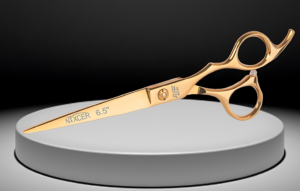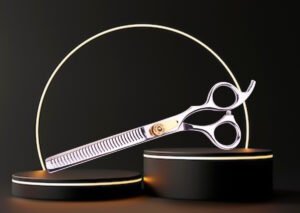When it comes to hair cutting, precision is key, and the most important tool in a hairdresser’s kit is a pair of high-quality hair cutting scissors. Whether you’re a professional stylist or someone who cuts hair at home, understanding the basics of hair cutting scissors is essential. These scissors aren’t just regular tools—they are designed to give you control, accuracy, and a smoother cutting experience.
In this guide, we’ll explore everything you need to know about hair cutting scissors, from the different types available to tips on choosing the right pair for your needs.
Why Hair Cutting Scissors Matter
Hair cutting scissors, also known as shears, are specially designed to cut hair with precision and ease. Unlike regular scissors, they are built with sharper blades, ergonomic handles, and a balance that reduces strain on your hands and wrists during long periods of use. Using the right scissors can make a huge difference in the quality of the cut, and they ensure you get a professional, polished result every time.
Key Features of Hair Cutting Scissors
Before you buy a pair of hair cutting scissors, it’s important to understand their key features. This knowledge will help you make a well-informed choice that suits your cutting style and comfort needs.
1. Blade Type
Hair cutting scissors come with different types of blades. The two most common ones are.
Convex blades: Known for their razor-sharp edges, these are perfect for smooth, precise cuts. They are commonly used by professional stylists.
Beveled edge blades: These are slightly less sharp but more durable and great for layered cuts or slicing through thick hair.
2. Handle Type
The handle design plays a huge role in comfort, especially if you’re cutting hair for long periods. The two main types of handles are.
Offset handles: These are ergonomically designed to reduce tension in the wrist, providing more comfort during cutting.
Opposing handles: These handles have symmetrical finger holes, offering a traditional grip that can be less comfortable for extended use.
3. Scissor Size
Scissors come in various lengths, typically ranging from 5 inches to 7.5 inches. The size you choose depends on your cutting technique and personal preference. Shorter scissors (5-5.5 inches) offer better control for detailed cuts, like trimming around the ears or creating bangs. Longer scissors (6-7.5 inches) are ideal for cutting larger sections of hair, making them great for blunt cuts and scissor-over-comb techniques.
Types of Hair Cutting Scissors
There are different types of scissors for different hair cutting techniques. Here’s a breakdown of the most common types:
1. Straight Scissors: These are your standard hair cutting scissors used for all-purpose cutting. Whether you’re trimming, layering, or performing blunt cuts, straight scissors are the go-to tool.
2. Thinning Scissors: These have one straight blade and one serrated blade with teeth. Thinning scissors are designed to remove excess bulk from the hair, making it look lighter and more textured. They’re great for blending layers and creating softer finishes.
3. Texturizing Scissors: Similar to thinning scissors, but with fewer teeth, texturizing scissors are used to add texture to hair. They remove less hair than thinning scissors, offering more control in shaping the final look.
4. Curved Scissors: These scissors have a slight curve in the blade, which makes them ideal for creating round shapes and soft edges, especially for hairstyles like pixie cuts or short bobs.
Choosing the Right Hair Cutting Scissors
Now that you know about the different types of scissors, how do you choose the right pair for your needs? Here are a few key factors to consider:
1. Comfort: Since hair cutting can take time, it’s important to select scissors that feel comfortable in your hand. Look for handles that fit your grip and blades that balance well.
2. Sharpness: A sharp pair of scissors ensures clean cuts and prevents hair from being bent or damaged. Choose scissors made of high-quality stainless steel or Japanese steel for long-lasting sharpness.
3. Purpose: Consider the types of haircuts you typically do. If you mostly give blunt cuts, a standard pair of straight scissors should suffice. However, if you like to experiment with layers and textures, you may want to invest in thinning or texturizing scissors as well.
4. Size: Think about your cutting style and the areas you focus on. If you need precision for small sections, go for shorter scissors. For larger sections or scissor-over-comb techniques, longer scissors will give you better control.
Maintenance Tips for Hair Cutting Scissors
Taking good care of your hair cutting scissors is essential for keeping them sharp and effective over time. Here are some quick maintenance tips:
Clean after each use: Hair, oils, and residue can dull the blades. Wipe your scissors clean with a soft cloth after every haircut.
Oil the pivot point: Apply a small drop of oil to the pivot point (where the blades meet) regularly. This helps the blades move smoothly and extends their life.
Store properly: Always store your scissors in a protective case to prevent them from getting damaged. Avoid dropping them, as this can affect their alignment.
Final Thoughts
Professional Hair cutting scissors are more than just tools they are precision instruments designed to give you control, comfort, and the ability to create flawless haircuts. Whether you’re a seasoned stylist or a beginner learning the ropes, understanding the different types of scissors and how to choose the right pair will help you elevate your cutting game.
By investing in the right scissors and taking proper care of them, you’ll enjoy cleaner, smoother cuts every time. Remember, the art of precision starts with the right tools in your hands!



